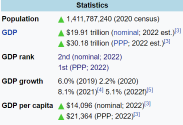"China today already has most of the raw ingredients for technological success, and the haphazard cutting of bilateral ties would likely be counterproductive. Instead, the United States should take targeted action to maintain Chinese dependence on foreign technology while continuing to attract and engage with Chinese innovators. For maintaining that dependence, the best point of leverage is semiconductors, specifically the highly specialized manufacturing equipment that is produced only by a handful of U.S. allies"
That should have been the plan but hubris got in the way and the ship has sailed.Even if they removed all restrictions against Huawei (and others on the entity list) and got access to TSMC's latest 3nm nodes, the drive to have an end to end semiconductor supply chain will not waver.
Typically an upstream B2B market is always smaller than the corresponding downstream B2C market. That is because businesses need to make a profit.
For example the semiconductor equipment market size is necessarily smaller than the semiconductor fab market size. If it were larger, then the profit of semiconductor fabs would be 0.
The small market size is an additional barrier to entry. All the current big players are either spinoffs from giant conglomerates like how ASML actually came from a joint venture of Phillips, or were first movers like Applied Materials. They did their R&D subsidized by either government or other corporate branches, then when they were ready, went independent.
A newcomer has to deal with the incumbents in a smaller market that already has locked suppliers and low profit.
But if you choke the supply, as long as the capability of the restricted market is not exactly 0 to respond, then the low profit and incumbent choking out newcomers effects are gone! The literal 2 biggest barriers disappear. Is it any wonder that AMEC and Naura are skyrocketing?

